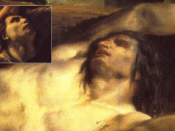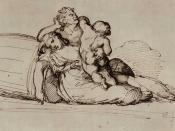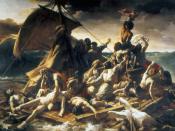For centuries artists have moved audiences through the use of pictures. As time progressed those images became more and more demanding of the viewer until they were meant to invoke a physical response. Perhaps the earliest account of such emotionally exact artwork is the 1818 piece, Raft of the Medusa, by Gericault. As time progressed people became more politically aware and involved and generations of art portray this. Picasso's Guernica, created in 1937, is a great example of how modern times soon saw a peak in the occurrence of allegorical and politically packed artworks. Gericault's "The Raft of the Medusa" and Picasso's "Guernica" are both horrifying accounts of the nature of men, that aimed to alter a viewer's political perception.
The start of the 19th century saw the emergence of a new more emotional, deeply inflective, and oftentimes mystery form of art - that of Romanticism.
Born in 1791 to middle-class French landowners in the little town of Rouen, the Gericault family moved to Paris when Theodore was five. He attended school in Paris but was indifferent to all subjects except drawing and classics. Although his father disagreed with formal artistic training, with his mother and uncle's help Gericault secretly began studying under military and horse-genre painter Carle Vernet in 1808. 1 In 1811 Gericault entered his first art competition that prompted him to, soon thereafter, break from his master, Vernet, and study the classical masters on his own. He would sit in the newly constructed Louvre and copy the paintings of the old masters, namely those of Rubens, until 1812 when he was expelled from the museum for assaulting a student. 2 Gericault continued his studies, taking up interest in the Napoleonic government. In 1812 he entered his first Salon in which he took a...


